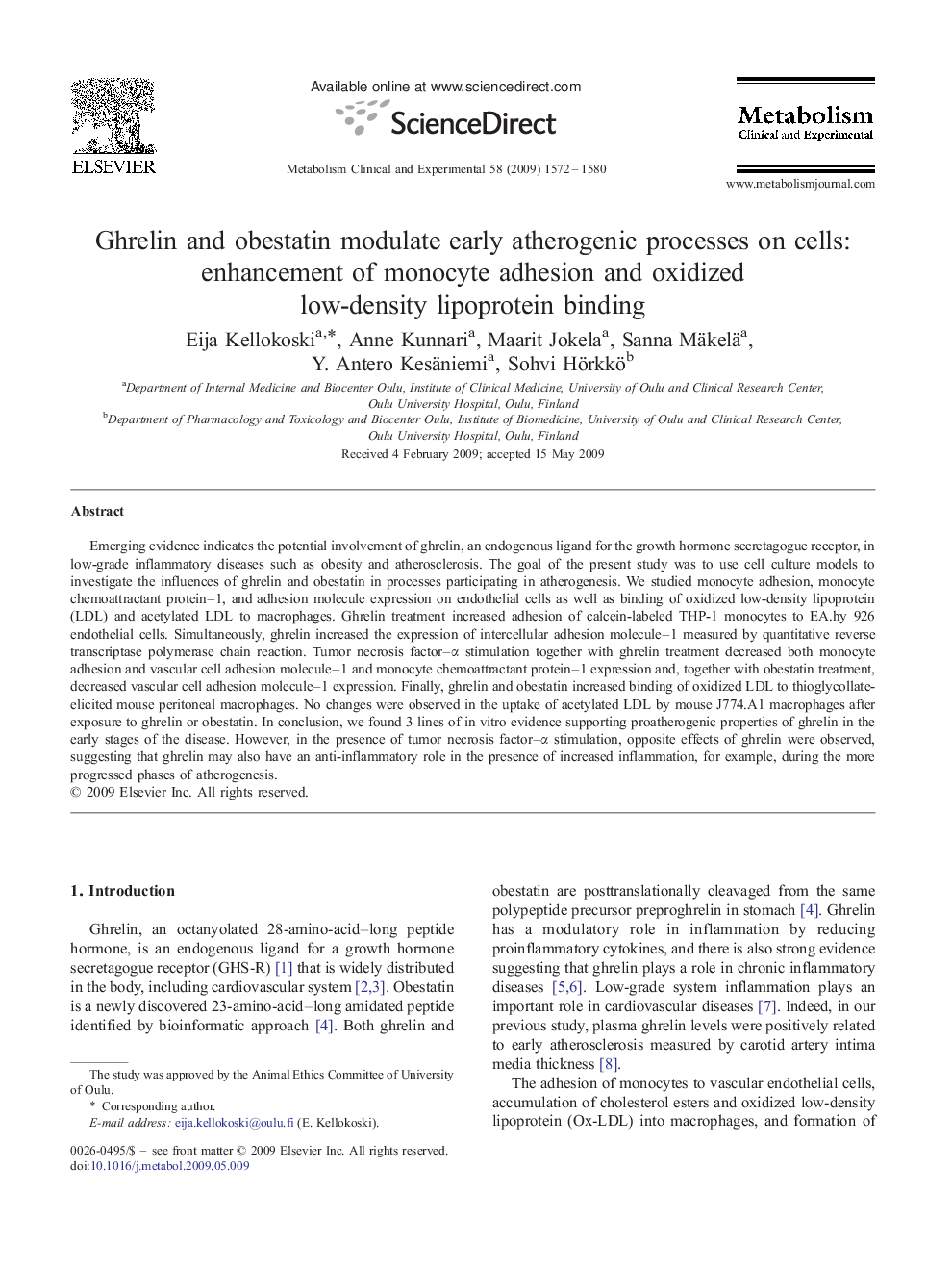| کد مقاله | کد نشریه | سال انتشار | مقاله انگلیسی | نسخه تمام متن |
|---|---|---|---|---|
| 2807001 | 1157142 | 2009 | 9 صفحه PDF | دانلود رایگان |

Emerging evidence indicates the potential involvement of ghrelin, an endogenous ligand for the growth hormone secretagogue receptor, in low-grade inflammatory diseases such as obesity and atherosclerosis. The goal of the present study was to use cell culture models to investigate the influences of ghrelin and obestatin in processes participating in atherogenesis. We studied monocyte adhesion, monocyte chemoattractant protein–1, and adhesion molecule expression on endothelial cells as well as binding of oxidized low-density lipoprotein (LDL) and acetylated LDL to macrophages. Ghrelin treatment increased adhesion of calcein-labeled THP-1 monocytes to EA.hy 926 endothelial cells. Simultaneously, ghrelin increased the expression of intercellular adhesion molecule–1 measured by quantitative reverse transcriptase polymerase chain reaction. Tumor necrosis factor–α stimulation together with ghrelin treatment decreased both monocyte adhesion and vascular cell adhesion molecule–1 and monocyte chemoattractant protein–1 expression and, together with obestatin treatment, decreased vascular cell adhesion molecule–1 expression. Finally, ghrelin and obestatin increased binding of oxidized LDL to thioglycollate-elicited mouse peritoneal macrophages. No changes were observed in the uptake of acetylated LDL by mouse J774.A1 macrophages after exposure to ghrelin or obestatin. In conclusion, we found 3 lines of in vitro evidence supporting proatherogenic properties of ghrelin in the early stages of the disease. However, in the presence of tumor necrosis factor–α stimulation, opposite effects of ghrelin were observed, suggesting that ghrelin may also have an anti-inflammatory role in the presence of increased inflammation, for example, during the more progressed phases of atherogenesis.
Journal: Metabolism - Volume 58, Issue 11, November 2009, Pages 1572–1580